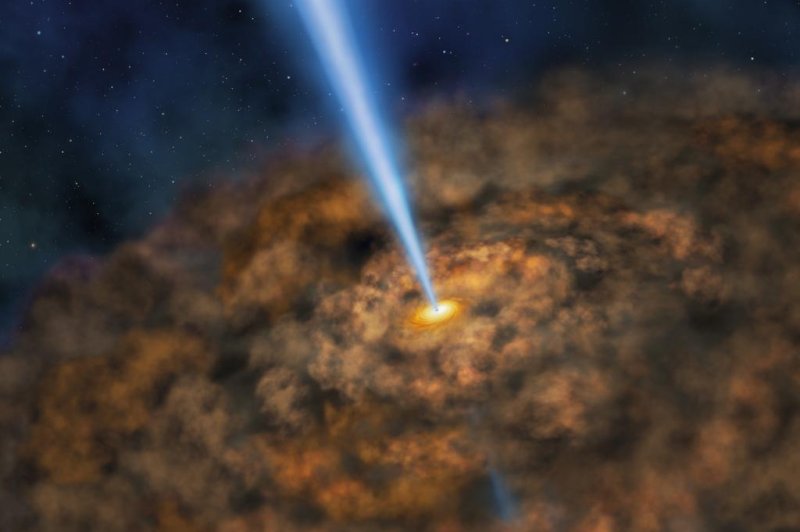An artistic rendering showcases the dense rings of dust -- the torus -- that can obscure the behavior of supermassive black holes inside active galactic nuclei. Photo by NASA/SOFIA/Lynette Cook
June 14 (UPI) -- A new survey of tori surrounding active supermassive black holes suggests dust surrounding central black holes is more compact than scientists thought.
The survey is one of the first to look specifically at the donut-shaped dust structures surrounding active black holes at the center of galaxies, or active galactic nuclei.
The surrounding torus obscures observations of many black holes. Energy absorbed by the torus is reemitted in extremely long infrared wavelengths. These wavelengths are absorbed by water vapor in Earth's atmosphere, making it difficult to image tori using ground-based telescopes.
Astronomers at the University of Texas, San Antonio used data collected by NASA's Stratospheric Observatory for Infrared Astronomy to analyze the tori surrounding 11 supermassive black holes, all actively consuming material at the centers of galaxies located more than 100 million light-years from Earth.
SOFIA's Faint Object infraRed CAmera, or FORCAST, allowed researchers to measure the infrared emissions of each torus, revealing the dust donut's size, opacity and density.
"Using SOFIA, we were able to obtain the most spatially detailed observations possible at these wavelengths, allowing us to make new discoveries on the characterization of active galactic nuclei dust tori," Lindsay Fuller, a grad student at UTSA, said in a news release.
The scientists' analysis, detailed in the journal Monthly Notices of the Royal Astronomical Society, suggests tori are 30 percent smaller than expected. Their dust is also denser and emits even longer infrared wavelengths than predicted.
Researchers expect follow up analysis to confirm whether all of the infrared emissions measured by SOFIA originate from tori. It's possible other structures in the active galactic nuclei are spitting out infrared emissions.
"Next, our goal will be to use SOFIA to observe a larger sample of active galactic nuclei, and at longer wavelengths," said Enrique Lopez-Rodriguez, staff scientist at the SOFIA Science Center. "That will allow us to put tighter constraints on the physical structure of the dusty environment surrounding the active galactic nuclei."















